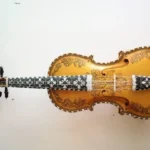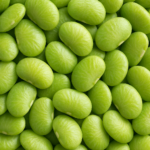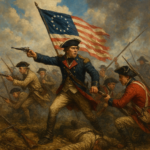
Welcome to our exploration of the enchanting world of the harpsichord! In this blog post, titled “25 Interesting Facts About Harpsichord,” we will delve into the rich history, unique characteristics, and fascinating anecdotes surrounding this beautiful instrument. From its origins in the Renaissance to its revival in modern music, the harpsichord has captivated musicians and audiences alike with its distinctive sound and intricate craftsmanship. Whether you’re a seasoned musician, a history enthusiast, or simply curious about musical instruments, you’re in for a treat as we uncover the lesser-known aspects of the harpsichord. Let’s embark on this melodious journey together!
Plucking Mechanism: The harpsichord is a unique keyboard instrument that produces sound through a mechanism known as plucking. When a key is pressed, a small plectrum, typically made of quill or plastic, is lifted, which in turn plucks the string attached to the soundboard. This action creates a bright, resonant sound that is characteristic of the instrument. The plucking mechanism differentiates it from other keyboard instruments like the piano, which uses hammers to strike the strings.
Historical Origins: The harpsichord originated in the 15th century, with its earliest known examples appearing in Italy. It became a prominent instrument during the Renaissance and reached its peak popularity in the Baroque period, roughly spanning from 1600 to 1750. During this time, it was favored for both solo performances and as an accompaniment for singers and other instruments. The instrument’s design evolved over the centuries, leading to the development of various styles and sizes.
Etymology: The term “harpsichord” derives from the Latin “harpsichordium,” which translates to “harp-like.” This name reflects the instrument’s sound production method, which is similar to that of a harp. The instrument’s design and playing technique also evoke the qualities of stringed instruments, making it an essential part of the early music tradition. The name has been used since the late Renaissance, indicating the instrument’s established place in music history.
Manuals: Harpsichords typically feature one or two manuals, or keyboards, which allow the player to access different sets of strings and tonal colors. The presence of two manuals enables the performer to create a broader range of musical dynamics and textures by switching between them or playing both simultaneously. Each manual may be equipped with different stops, which control which strings are plucked, further enhancing the instrument’s versatility.
String Sets: Many harpsichords are designed with multiple sets of strings, known as choirs, which can be engaged or disengaged through various stops. This feature allows the player to achieve different tonal qualities and volumes. A common configuration includes two sets of strings for each manual, providing a richer sound. The ability to blend these strings gives the harpsichord its characteristic bright and resonant tone, making it suitable for a wide range of musical styles.
Tuning Standards: The most common tuning for a harpsichord is A440, where the A above middle C is tuned to 440 Hz. This standard tuning allows for consistency across various instruments and ensembles. However, harpsichords can also be tuned to different temperaments, which affects the intervals between notes and the overall harmonic structure of the music played. Historically, various tunings were used, and performers often chose temperaments that suited the specific repertoire.
Dynamic Range: Unlike the piano, the harpsichord does not have the ability to produce varying dynamics based on the force applied to the keys. Instead, it produces a consistent volume regardless of how hard or soft the keys are pressed. This characteristic can be attributed to its plucking mechanism, which does not allow for the same expressive capabilities found in the piano. As a result, harpsichord music often relies on articulation and phrasing to convey emotion and nuance.
Transition to Piano: The harpsichord was widely used until the late 18th century when the piano began to gain popularity due to its dynamic range and expressive capabilities. The piano’s ability to produce soft and loud sounds, along with its more versatile touch, made it a preferred choice for composers and performers. This transition marked a significant shift in keyboard music, leading to the decline of the harpsichord as a primary instrument in Western classical music.
Notable Composers: Several prominent composers wrote extensively for the harpsichord, including Johann Sebastian Bach, who composed numerous works such as the “Goldberg Variations” and “Italian Concerto.” Domenico Scarlatti is renowned for his sonatas, which showcase the instrument’s technical possibilities and expressive range. François Couperin, a French composer, also contributed significantly to the harpsichord repertoire, blending French and Italian styles in his compositions.
Historical Performance: The harpsichord is often employed in historically informed performances, which aim to recreate the sound and style of music from the Renaissance and Baroque periods. Musicians who specialize in this practice study historical techniques, tuning systems, and performance practices to deliver authentic interpretations of the repertoire. The resurgence of interest in early music has led to a renewed appreciation for the harpsichord and its role in the history of Western classical music.
Shape Variations: Harpsichords can be constructed in various shapes, each affecting the instrument’s sound and aesthetic appeal. The most common designs include rectangular and oval forms. The shape influences the resonance and projection of sound, with larger instruments typically producing a fuller tone. Some builders create ornate designs with elaborate carvings and decorations, reflecting the craftsmanship and artistic styles of the period in which they were made.
Range: The typical range of a harpsichord spans about four to five octaves, which allows for a wide variety of musical expression. The standard range often starts from C or F in the lowest octave, extending up to C or D in the highest octave. This range is suitable for much of the Baroque repertoire, enabling performers to play complex polyphonic textures and intricate melodies. Some modern harpsichords may have extended ranges, accommodating contemporary compositions.
Materials: Harpsichords are primarily constructed from wood, which contributes to their distinctive sound quality. The soundboard is usually made from spruce or cedar, chosen for their resonant properties. The choice of wood affects the tonal characteristics, with different types offering varying degrees of brightness and warmth. The body of the instrument is often made from hardwoods like walnut or maple, providing durability and aesthetic beauty.
Craftsmanship: Building a harpsichord is a meticulous process that can take several months, depending on the builder’s skill and the complexity of the design. Craftsmen must carefully select materials, as well as construct and assemble numerous components, including the keyboard, strings, and action mechanism. The quality of craftsmanship directly impacts the instrument’s sound and playability, making skilled builders highly valued in the early music community.
Buff Stop: Some harpsichords feature a mechanism known as a “buff” stop, which mutes the sound by placing a cloth or felt against the strings. Engaging the buff stop reduces the instrument’s volume and alters its tonal quality, creating a softer, more subdued sound. This feature allows performers to achieve a wider range of dynamics and colors, enhancing the expressive potential of the harpsichord in various musical contexts.
Sound Characteristics: The sound of the harpsichord is often described as bright, clear, and resonant. Its unique timbre results from the plucking action of the plectrum and the construction of the strings and soundboard. The instrument’s sound can cut through an ensemble, making it an excellent choice for both solo and accompaniment roles. The distinct tonal qualities contribute to its continued popularity in performances of early music, where clarity and articulation are essential.
Ensemble Use: During the Renaissance and Baroque periods, the harpsichord was commonly used in ensemble settings, often accompanying singers, violins, and other instruments. It served both as a harmonic foundation and a melodic voice within the ensemble. The instrument’s bright sound complemented the textures of other instruments, making it a staple in chamber music and orchestral performances. Its role as a continuo instrument was particularly significant, providing the harmonic support necessary for the ensemble’s cohesion.
Playing Techniques: The harpsichord can be played using various techniques, including fingerstyle and the use of plectra. Performers often employ different fingerings and articulations to achieve a range of expressive effects. The instrument allows for rapid passages and intricate ornamentation, which are hallmarks of Baroque performance practice. Players may also use techniques like trills and mordents to enhance the musical line, showcasing the instrument’s capabilities.
Modern Revival: The 20th and 21st centuries have seen a revival of interest in the harpsichord, with many modern builders creating new instruments that reflect historical designs. This resurgence is partly due to the early music movement, which emphasizes authenticity in performance. Contemporary harpsichords are often built using traditional methods and materials, while also incorporating modern innovations to improve playability and sound quality. This revival has led to a growing repertoire of new compositions written specifically for the instrument.
Contemporary Compositions: Despite its historical roots, the harpsichord continues to inspire contemporary composers who write music specifically for the instrument. These modern works explore its unique sound and capabilities, often blending traditional techniques with innovative approaches. Composers experiment with extended techniques, such as prepared piano methods or electronic integration, expanding the harpsichord’s role in contemporary music. This ongoing dialogue between the past and present ensures the harpsichord remains a vital part of the musical landscape.
Size Variations: Harpsichords come in various sizes, ranging from small, portable models to large, elaborate concert instruments. Smaller harpsichords, often referred to as “kit” instruments, are designed for ease of transport and are suitable for home use or smaller venues. Larger concert harpsichords typically feature more elaborate construction and a greater number of strings, allowing for a richer sound and greater dynamic range. The size of the instrument influences its tonal quality, projection, and overall presence in performance settings.
Early Music Festivals: The harpsichord is frequently featured in early music festivals and competitions, where musicians showcase their skills and repertoire. These events celebrate historical performance practices and provide a platform for performers specializing in Baroque and Renaissance music. Festivals often include masterclasses, lectures, and recitals, offering opportunities for both established and emerging artists to engage with audiences and fellow musicians. The presence of the harpsichord at these events highlights its significance in the early music community.
Jack Mechanism: The harpsichord employs a unique mechanism called a “jack,” which is a small device that holds the plectrum responsible for plucking the strings. When a key is pressed, the jack rises, causing the plectrum to pluck the string and then fall back down, allowing the string to vibrate freely. The design of the jack is crucial to the instrument’s action and sound production, influencing how quickly and smoothly the notes can be played. The jack mechanism is a key feature that distinguishes the harpsichord from other keyboard instruments.
Tuning Temperaments: Harpsichords can be tuned to various temperaments, such as equal temperament or meantone temperament. Equal temperament divides the octave into 12 equal parts, allowing for consistent tuning across all keys, making it suitable for diverse musical styles. Meantone temperament, on the other hand, offers a sweeter sound in certain keys by adjusting the intervals between notes. Historically, different temperaments were preferred for specific repertoires, and performers often chose tunings that best suited the music they were playing, adding to the instrument’s versatility.
Historical Performance Practice: The harpsichord plays a vital role in the historical performance practice movement, which emphasizes authenticity in the interpretation of early music. Musicians who specialize in this approach study historical techniques, instruments, and performance practices to recreate the sound and style of the time. This movement has led to a renewed interest in the harpsichord, as performers seek to connect with the music of the Renaissance and Baroque periods. The instrument’s unique sound and characteristics are essential for achieving an authentic representation of the repertoire.
Harpsichord FAQs
1. What is a Harpsichord?
- Definition: The harpsichord is an early keyboard instrument. It produces sound when quills (small pieces of leather or plastic) pluck strings. Unlike a piano, where hammers strike the strings, the harpsichord’s sound is consistently loud and lacks the dynamic range of a piano.
- Key Features:
- Plucked Strings: The primary mechanism.
- Multiple Registers: Most harpsichords have two or more sets of strings (registers), each producing a different tone color. Common registers include 8-foot (normal pitch), 4-foot (an octave higher), and 16-foot (an octave lower).
- Stops: Levers that engage or disengage registers, allowing the player to combine different sounds.
- Soundboard: A large, wooden surface that amplifies the sound of the vibrating strings.
2. How Does a Harpsichord Sound?
- Tone Color: The harpsichord has a bright, clear, and often sparkling sound. It’s characterized by a quick attack and a rapid decay.
- Dynamic Range: Limited. Unlike a piano, the harpsichord’s volume remains relatively constant regardless of how hard or softly the keys are pressed.
- Articulation: Excellent for rapid passages, ornaments, and intricate counterpoint.
3. What is the History of the Harpsichord?
- Origins: The harpsichord emerged in Europe during the 15th century, evolving from earlier plucked string instruments.
- Golden Age: The instrument flourished during the Baroque period (roughly 1600-1750), a time when composers like Bach, Handel, and Scarlatti wrote extensively for it.
- Decline: The harpsichord’s popularity declined in the late 18th and early 19th centuries with the rise of the piano, which offered greater dynamic flexibility and expressive possibilities.
- Revival: In the 20th century, there was a renewed interest in historically informed performance, leading to a resurgence in harpsichord playing and building.
4. What is the Difference Between a Harpsichord and a Piano?
- Sound Production: Harpsichord: Plucked strings; Piano: Hammered strings.
- Dynamic Range: Harpsichord: Limited; Piano: Wide range of dynamics (from very soft to very loud).
- Tone Color: Harpsichord: Bright, clear, and often sparkling; Piano: Varies greatly depending on the type of piano and playing technique.
- Touch Sensitivity: Harpsichord: Limited; Piano: Highly responsive to touch.
5. How Do You Learn to Play the Harpsichord?
- Finding a Teacher: Seek out a qualified harpsichord teacher. Many music conservatories and universities offer harpsichord instruction.
- Acquiring an Instrument: Consider renting or leasing a harpsichord, especially when starting.
- Learning Technique: Focus on proper fingering, hand position, and articulation.
- Studying Repertoire: Explore Baroque music, the instrument’s most significant period.
6. Where Can I Hear Live Harpsichord Music?
- Concerts: Attend concerts by early music ensembles and solo harpsichordists.
- Festivals: Many music festivals specialize in early music and feature harpsichord performances.
- Universities and Conservatories: Check local university and conservatory music departments for student and faculty recitals.
7. Is the Harpsichord Difficult to Learn?
- Challenges: The harpsichord presents unique challenges, including:
- Limited dynamics: Players must rely on articulation and registration to create musical expression.
- Technical demands: Requires precise fingering and a strong sense of rhythm.
- Rewards: Mastering the harpsichord is a rewarding experience, offering access to a rich and beautiful repertoire.
8. How Much Does a Harpsichord Cost?
- Price Range: Harpsichords vary significantly in price, from student models to high-end instruments by renowned makers.
- Factors Affecting Price: Size, number of registers, materials used, and the builder’s reputation all influence the cost.
9. What is the Best Way to Care for a Harpsichord?
- Temperature and Humidity: Maintain a stable temperature and humidity level to prevent damage to the wood and strings.
- Dusting: Regularly dust the instrument to prevent dust accumulation, which can interfere with the mechanism.
- Professional Tuning and Maintenance: Schedule regular tuning and maintenance by a qualified harpsichord technician.
10. What is the Future of the Harpsichord?
- Continued Growth: The harpsichord continues to enjoy a vibrant presence in the musical world.
- Contemporary Music: Contemporary composers are writing new works for the instrument, expanding its repertoire beyond the Baroque era.
- Historical Performance: The harpsichord plays a crucial role in historically informed performance practices, offering insights into how music sounded in the past.









